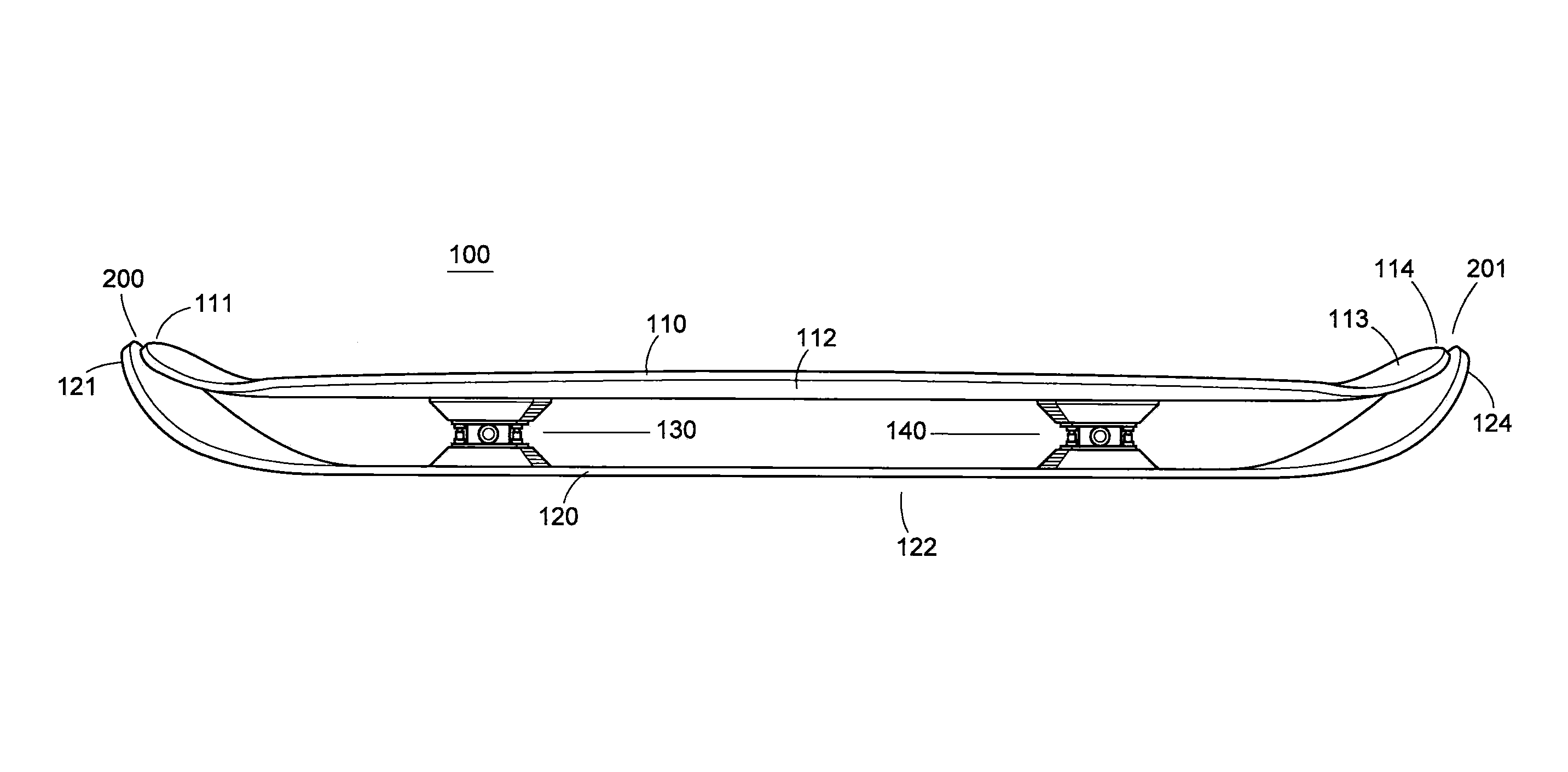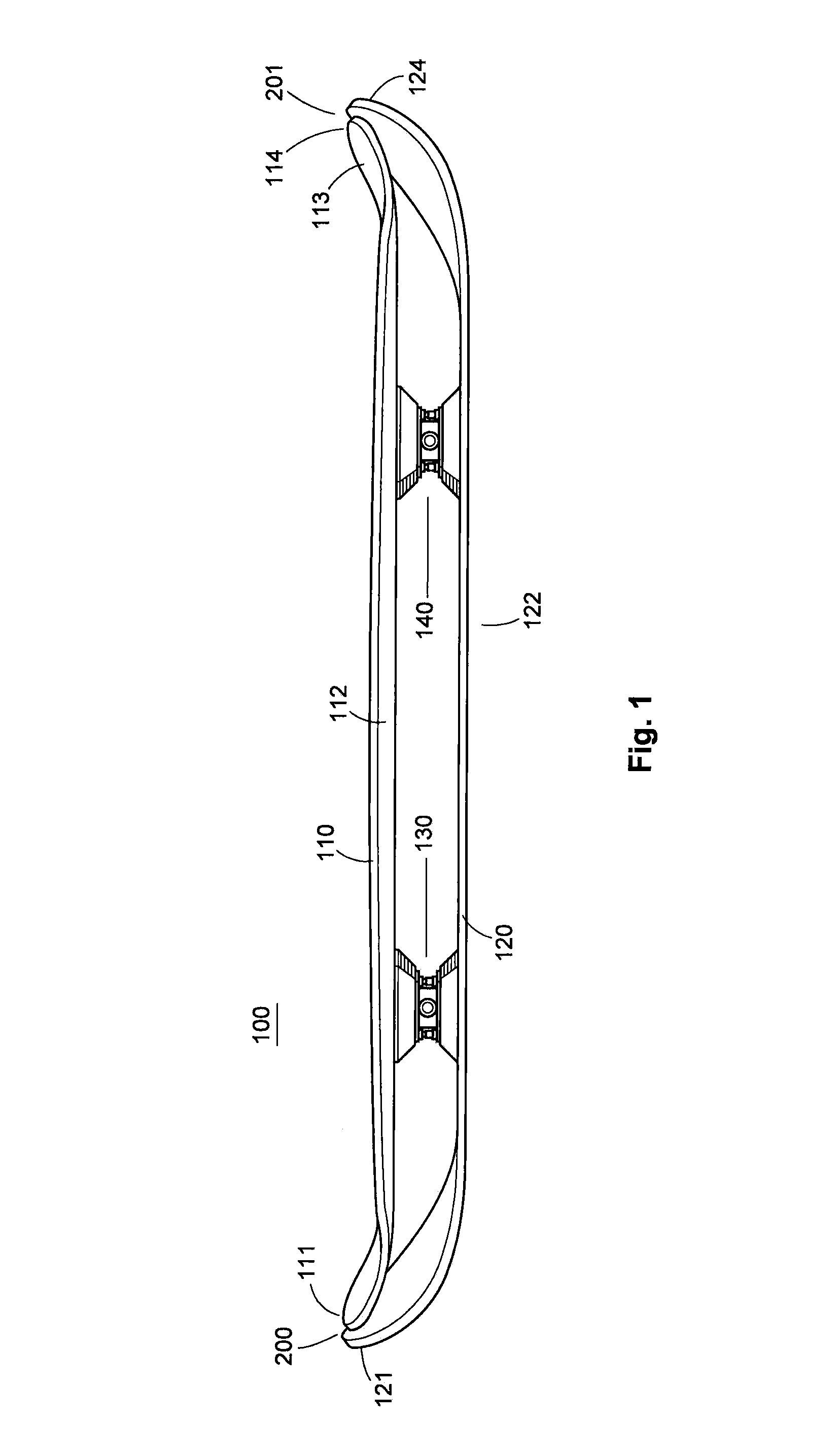Snowskate and a tip for a snowskate
a snowskate and snowskate technology, applied in the field of snowskates, can solve the problems of not being able to ride in all snow conditions, and being difficult to ride in hard snow, so as to reduce friction, reduce snow, and reduce snow
- Summary
- Abstract
- Description
- Claims
- Application Information
AI Technical Summary
Benefits of technology
Problems solved by technology
Method used
Image
Examples
Embodiment Construction
[0018]In the following description, details are set forth to provide an understanding of the invention. In some instances, certain structures and techniques have not been described or shown in detail in order not to obscure the invention.
[0019]According to one embodiment of the invention, there is provided a bi-deck snowskate that is configured for riding in varied snow conditions. The snowskate has a large top or upper deck, two primary gliding surfaces, and a lower deck or ski length that allows a rider or user to access all necessary positions over the ski's edge from tip to tail depending on snow conditions or terrain while limiting friction and increasing surface area. The snowskate provides for improved performance in powder, improved groomer control, and improved stance options on all terrain that may be encountered in a run simply by a rider adjusting the position of his or her feet. These advantages are provided by the increased length of the top deck made possible by the s...
PUM
 Login to View More
Login to View More Abstract
Description
Claims
Application Information
 Login to View More
Login to View More - R&D
- Intellectual Property
- Life Sciences
- Materials
- Tech Scout
- Unparalleled Data Quality
- Higher Quality Content
- 60% Fewer Hallucinations
Browse by: Latest US Patents, China's latest patents, Technical Efficacy Thesaurus, Application Domain, Technology Topic, Popular Technical Reports.
© 2025 PatSnap. All rights reserved.Legal|Privacy policy|Modern Slavery Act Transparency Statement|Sitemap|About US| Contact US: help@patsnap.com



